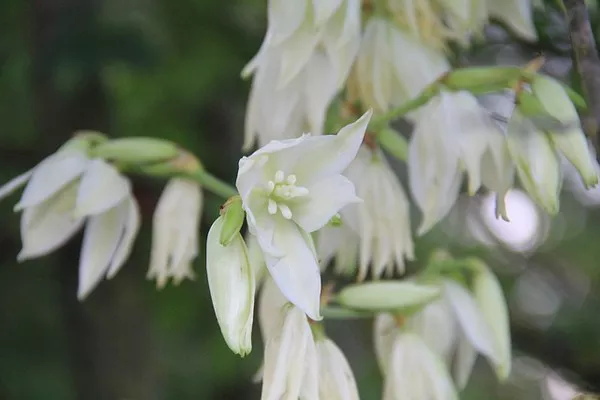Yucca plants, with their striking sword-like leaves and resilient nature, make for an impressive addition to any garden or indoor space. These hardy, drought-tolerant plants are not only aesthetically pleasing but also relatively low-maintenance. Whether you’re a seasoned gardener or a newbie to the world of horticulture, growing yucca plants can be a rewarding experience. In this comprehensive guide, we will explore the steps required to cultivate and care for yucca plants, ensuring they thrive and grace your environment with their unique beauty.
Understanding Yucca Plants
Yucca, a genus of plants belonging to the Agavaceae family, consists of around 40 different species. Native to arid regions in North and Central America, yuccas have evolved to withstand harsh conditions, making them well-suited for drought-tolerant gardening. Their distinctive characteristics include long, sword-shaped leaves, which radiate from a central stem, and sometimes produce tall, showy flower spikes in various colors, depending on the species.
Selecting the Right Yucca Variety
Before you begin the process of growing yucca plants, it’s important to choose the right variety for your specific needs. Here are some common yucca species you might consider:
Yucca filamentosa (Adam’s Needle): Known for its dramatic foliage and beautiful creamy-white flowers, this yucca variety is suitable for both indoor and outdoor cultivation.
Yucca gloriosa (Spanish Dagger): With its sharp-tipped leaves and tall flower spikes, this species is ideal for outdoor landscaping and can withstand frost.
Yucca elephantipes (Spineless Yucca): This indoor-friendly yucca species is a popular choice for interior decor. It boasts smooth-edged, slender leaves and can reach substantial heights if properly cared for.
Yucca brevifolia (Joshua Tree): Recognizable by its unique, tree-like appearance, the Joshua Tree is native to desert regions and thrives in well-drained soil under full sunlight.
Yucca rostrata (Beaked Yucca): Featuring blue-green leaves and a compact growth habit, this yucca species is perfect for smaller gardens or containers.
Choosing the right yucca variety largely depends on your location, available space, and personal preferences.
Preparing the Growing Environment
Yucca plants are known for their adaptability, but creating the right environment is crucial for their success. Here’s how to prepare the ideal setting:
Sunlight: Yuccas thrive in full sunlight. Ensure they receive at least 6 hours of direct sunlight each day. Indoors, place them near a south or west-facing window to maximize light exposure.
Soil: Well-draining soil is essential for yuccas to prevent root rot. A mixture of cactus potting mix and perlite or sand will help promote proper drainage. In outdoor gardens, make sure the planting site has well-draining soil.
Pot or Container: If growing yuccas indoors or in a limited space, choose a pot or container that’s large enough to accommodate the root system. Make sure it has drainage holes to prevent waterlogging.
Planting Yucca
Once you’ve selected the right variety and prepared the growing environment, it’s time to plant your yucca. Follow these steps:
Dig a Hole: For outdoor yucca planting, dig a hole twice the size of the yucca root ball. If you’re growing yucca in a pot, select a container that is at least 2 inches wider in diameter than the root ball.
Add Well-Draining Soil: Fill the hole or pot with the well-draining soil mixture mentioned earlier. This ensures proper drainage and prevents water from pooling around the roots.
Place the Yucca: Gently remove the yucca plant from its nursery container and place it in the prepared hole or pot. Ensure that the plant is at the same depth as it was in the nursery container.
Backfill with Soil: Fill in the hole or pot with more well-draining soil, pressing it firmly around the plant. Water thoroughly to help settle the soil and eliminate air pockets.
Caring for Yucca Plants
Yucca plants are relatively low-maintenance, but they still require some care to ensure their health and vitality. Here are essential care guidelines:
Watering: Yuccas are drought-tolerant plants and are more likely to suffer from overwatering than underwatering. Water your yucca sparingly. Allow the soil to dry out completely between waterings. This typically means watering every 2-4 weeks, but it may vary depending on environmental conditions.
Fertilization: Yucca plants do not require frequent feeding. Use a balanced, slow-release fertilizer in the spring to encourage healthy growth. Avoid over-fertilization, as it can lead to excessive leaf growth at the expense of flowering.
Pruning: Pruning yucca plants is usually minimal. Remove dead or damaged leaves as needed to maintain the plant’s appearance. Be cautious when handling the sharp-edged leaves to avoid injury.
Pests and Diseases: Yucca plants are generally resistant to pests and diseases. However, watch out for common garden pests like scale insects or mealybugs. If infestations occur, treat them with insecticidal soap or neem oil.
Cold Protection: While many yucca species are cold-hardy, some are more sensitive to frost. In colder regions, consider protecting your yuccas during winter by covering them or moving them indoors.
Propagation
If you’re interested in expanding your yucca collection or sharing yucca plants with others, you can propagate them through various methods:
Offsets: Yucca plants often produce offsets, or baby plants, around the base. These can be carefully separated from the parent plant and potted up to create new yucca specimens.
Cuttings: Yuccas can be propagated from stem cuttings. Cut a healthy stem section and allow it to callus for a few days. Plant the cutting in well-draining soil, and it will root and grow into a new plant.
Conclusion
Growing yucca plants can be a satisfying experience, whether you choose to cultivate them in your garden or indoors as a striking element of your decor. With the right selection, an appropriate growing environment, and proper care, these versatile and resilient plants can thrive and bring their unique charm to your surroundings. Remember to be patient, as yuccas are known for their slow growth, and enjoy the striking beauty they offer as they mature and flourish in your care.


